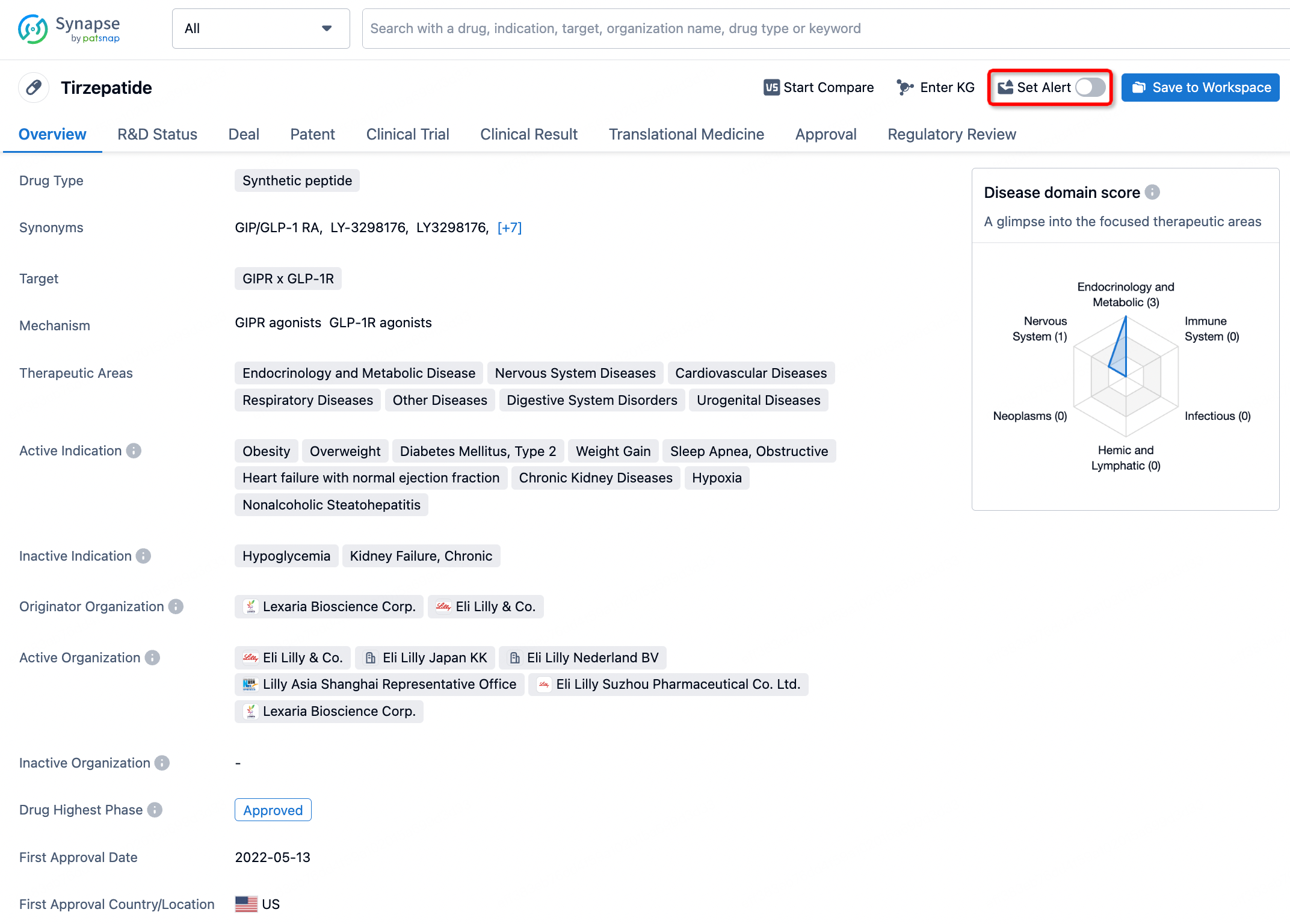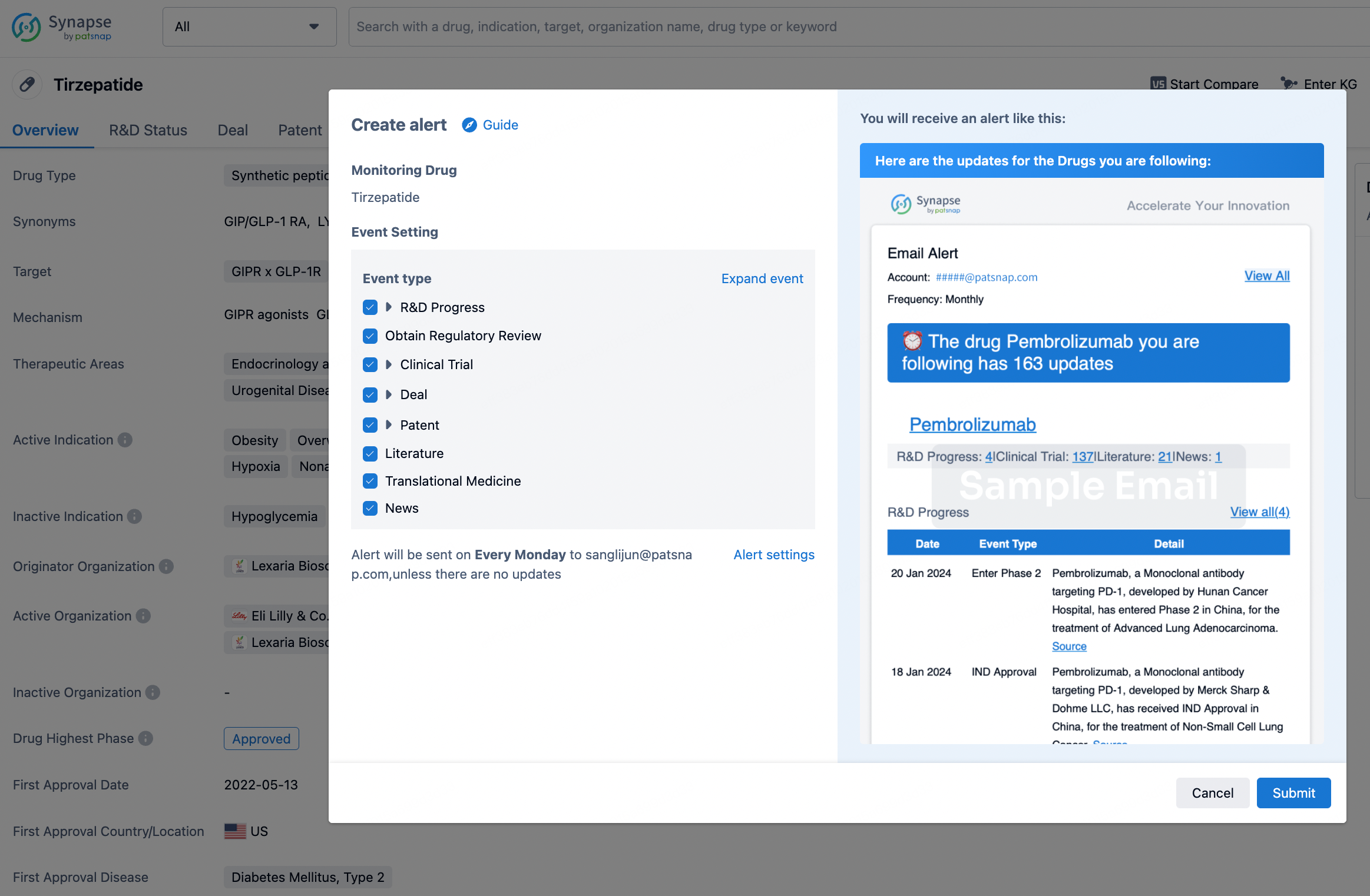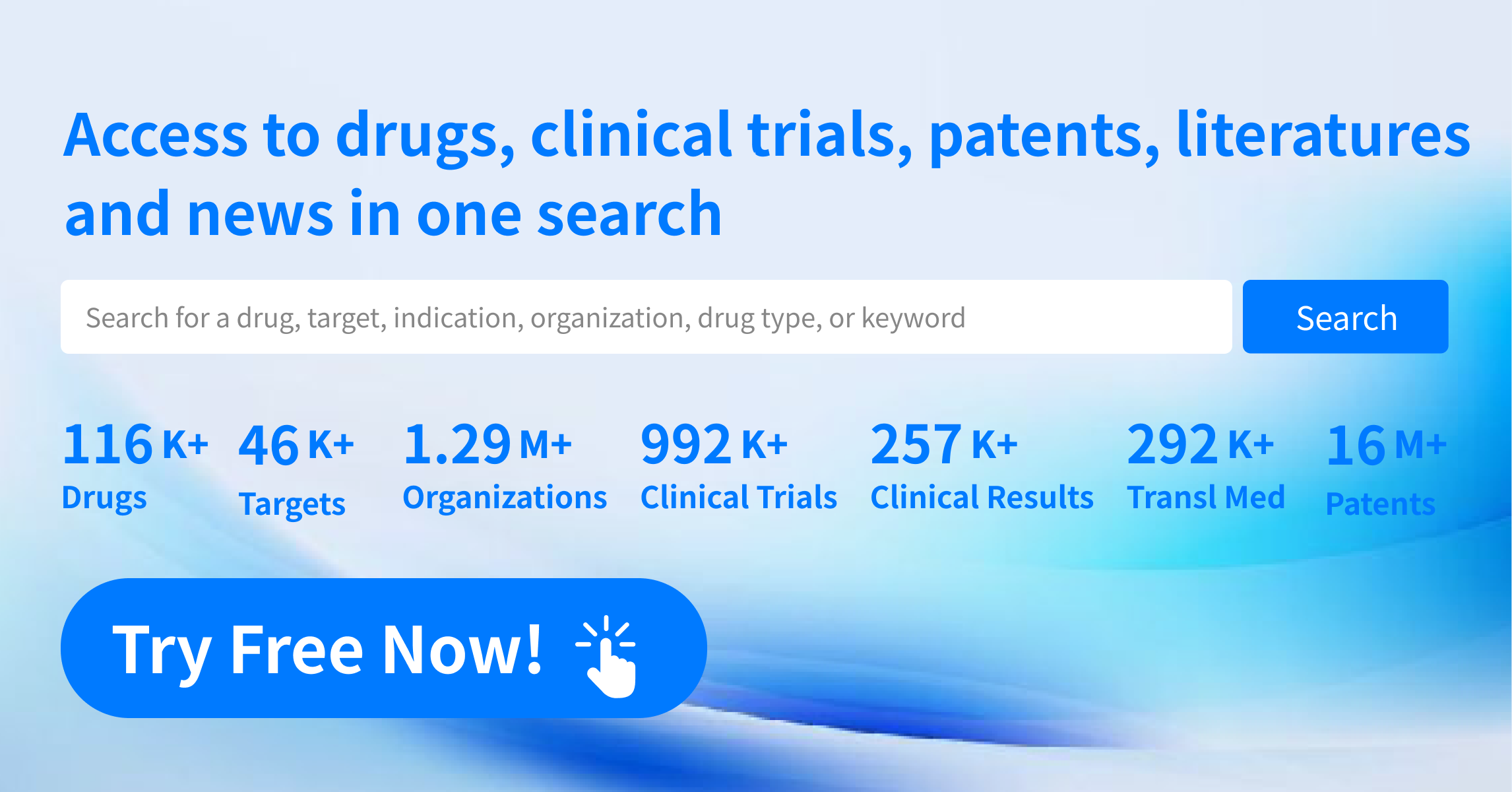Request Demo
What is Tromantadine Hydrochloride used for?
15 June 2024
Tromantadine Hydrochloride is an antiviral medication primarily marketed under various trade names, including Viru-Merz and Tromavir. Developed as a synthetic derivative of adamantane, Tromantadine Hydrochloride targets herpes simplex virus (HSV) infections, specifically HSV-1 and HSV-2 strains. This medication is often researched and developed by pharmaceutical companies and scientific institutions focusing on antiviral therapies. It falls under the drug category of antiviral agents, and its main indications include the treatment and prevention of HSV infections, such as cold sores and genital herpes.
Tromantadine Hydrochloride has gone through various stages of clinical research, showing promising results in reducing the duration and severity of herpes outbreaks. The drug has been the subject of several studies that demonstrate its efficacy in managing HSV symptoms. Additionally, ongoing research aims to optimize its formulation and delivery methods to enhance its therapeutic impact.
Tromantadine Hydrochloride Mechanism of Action
The mechanism of action for Tromantadine Hydrochloride is centered around its ability to inhibit the replication of the herpes simplex virus. Specifically, it targets the early stages of viral replication, preventing the virus from entering host cells and multiplying. Tromantadine Hydrochloride achieves this by interfering with the virus's ability to bind to cell receptors, which is a crucial step in the viral infection process.
Once the virus is inhibited from attaching to the host cell, it cannot penetrate the cell membrane or release its genetic material into the host cell's nucleus. This effectively halts the replication cycle of the virus, thereby reducing the viral load and mitigating the symptoms associated with HSV infections. By preventing the virus from replicating, Tromantadine Hydrochloride not only alleviates acute symptoms but also reduces the likelihood of recurrent outbreaks.
How to Use Tromantadine Hydrochloride
Tromantadine Hydrochloride is available in various formulations, including topical gels, creams, and, less commonly, oral tablets. The most common method of administration is topical application, which involves directly applying the medication to the affected area. This method allows for localized treatment, reducing systemic exposure and potential side effects.
For topical administration, it is recommended to apply the medication to the affected area 3 to 5 times daily, starting at the first sign of an outbreak. Early application is crucial for maximizing the drug's efficacy, as it can significantly reduce the duration and severity of symptoms if used at the initial stage of infection, such as tingling, itching, or redness.
The onset of action for Tromantadine Hydrochloride is relatively rapid, with patients often experiencing relief within a few hours to a couple of days after starting treatment. The duration of treatment typically lasts for about 5 to 7 days, depending on the severity of the outbreak and the patient's response to the medication.
It is essential to follow the prescribed dosage and administration guidelines provided by a healthcare professional. Overuse or incorrect application can lead to reduced effectiveness and potential side effects. Additionally, it is crucial to maintain proper hygiene when applying the medication to prevent further spread of the virus.
What is Tromantadine Hydrochloride Side Effects
As with any medication, Tromantadine Hydrochloride may cause side effects, although not everyone experiences them. The most common side effects associated with topical application include local skin reactions such as redness, itching, and mild burning sensation at the site of application. These side effects are usually temporary and subside on their own without requiring medical intervention.
In rare cases, more severe side effects may occur, including allergic reactions characterized by symptoms such as rash, swelling, and difficulty breathing. If any signs of an allergic reaction are observed, it is crucial to discontinue the use of the medication immediately and seek medical attention.
Contraindications for the use of Tromantadine Hydrochloride include hypersensitivity to any of the drug's components. Patients with a known allergy to adamantane derivatives should avoid using this medication. Additionally, it is advisable to use caution when administering Tromantadine Hydrochloride to pregnant or breastfeeding women, as the safety profile for these populations has not been fully established.
It is also important to avoid applying the medication to open wounds, mucous membranes, or areas with broken skin, as this can increase the risk of systemic absorption and potential side effects. Patients with severe dermatological conditions or compromised immune systems should consult their healthcare provider before using Tromantadine Hydrochloride to ensure it is safe and appropriate for their condition.
What Other Drugs Will Affect Tromantadine Hydrochloride
Drug interactions can occur when Tromantadine Hydrochloride is used in conjunction with other medications. It is essential to inform the healthcare provider of all medications, supplements, and herbal products being taken to avoid potential interactions.
One of the primary considerations is the use of other antiviral medications. Concurrent use of multiple antiviral agents can lead to additive effects, which may increase the risk of side effects without providing additional therapeutic benefits. It is generally recommended to avoid using Tromantadine Hydrochloride alongside other antiviral drugs unless specifically prescribed by a healthcare professional.
Additionally, medications that affect the immune system, such as immunosuppressants, may alter the efficacy of Tromantadine Hydrochloride. Immunosuppressive drugs can weaken the immune response, potentially reducing the effectiveness of antiviral treatments. Patients taking immunosuppressants should consult their healthcare provider to determine the best course of action.
Interactions with topical medications or skincare products should also be considered. Certain topical agents, such as corticosteroids or other dermatological treatments, may interfere with the absorption or effectiveness of Tromantadine Hydrochloride. It is advisable to use only one topical medication at a time on the affected area, unless otherwise directed by a healthcare provider.
In conclusion, Tromantadine Hydrochloride is a valuable antiviral agent for managing herpes simplex virus infections. Its targeted mechanism of action, ease of use, and relatively low side effect profile make it a popular choice for both acute treatment and prevention of HSV outbreaks. However, it is essential to use the medication as directed, be aware of potential side effects, and consider possible drug interactions to ensure safe and effective therapy. As with any medication, consulting with a healthcare provider is crucial to tailor the treatment plan to individual needs and conditions.
Tromantadine Hydrochloride has gone through various stages of clinical research, showing promising results in reducing the duration and severity of herpes outbreaks. The drug has been the subject of several studies that demonstrate its efficacy in managing HSV symptoms. Additionally, ongoing research aims to optimize its formulation and delivery methods to enhance its therapeutic impact.
Tromantadine Hydrochloride Mechanism of Action
The mechanism of action for Tromantadine Hydrochloride is centered around its ability to inhibit the replication of the herpes simplex virus. Specifically, it targets the early stages of viral replication, preventing the virus from entering host cells and multiplying. Tromantadine Hydrochloride achieves this by interfering with the virus's ability to bind to cell receptors, which is a crucial step in the viral infection process.
Once the virus is inhibited from attaching to the host cell, it cannot penetrate the cell membrane or release its genetic material into the host cell's nucleus. This effectively halts the replication cycle of the virus, thereby reducing the viral load and mitigating the symptoms associated with HSV infections. By preventing the virus from replicating, Tromantadine Hydrochloride not only alleviates acute symptoms but also reduces the likelihood of recurrent outbreaks.
How to Use Tromantadine Hydrochloride
Tromantadine Hydrochloride is available in various formulations, including topical gels, creams, and, less commonly, oral tablets. The most common method of administration is topical application, which involves directly applying the medication to the affected area. This method allows for localized treatment, reducing systemic exposure and potential side effects.
For topical administration, it is recommended to apply the medication to the affected area 3 to 5 times daily, starting at the first sign of an outbreak. Early application is crucial for maximizing the drug's efficacy, as it can significantly reduce the duration and severity of symptoms if used at the initial stage of infection, such as tingling, itching, or redness.
The onset of action for Tromantadine Hydrochloride is relatively rapid, with patients often experiencing relief within a few hours to a couple of days after starting treatment. The duration of treatment typically lasts for about 5 to 7 days, depending on the severity of the outbreak and the patient's response to the medication.
It is essential to follow the prescribed dosage and administration guidelines provided by a healthcare professional. Overuse or incorrect application can lead to reduced effectiveness and potential side effects. Additionally, it is crucial to maintain proper hygiene when applying the medication to prevent further spread of the virus.
What is Tromantadine Hydrochloride Side Effects
As with any medication, Tromantadine Hydrochloride may cause side effects, although not everyone experiences them. The most common side effects associated with topical application include local skin reactions such as redness, itching, and mild burning sensation at the site of application. These side effects are usually temporary and subside on their own without requiring medical intervention.
In rare cases, more severe side effects may occur, including allergic reactions characterized by symptoms such as rash, swelling, and difficulty breathing. If any signs of an allergic reaction are observed, it is crucial to discontinue the use of the medication immediately and seek medical attention.
Contraindications for the use of Tromantadine Hydrochloride include hypersensitivity to any of the drug's components. Patients with a known allergy to adamantane derivatives should avoid using this medication. Additionally, it is advisable to use caution when administering Tromantadine Hydrochloride to pregnant or breastfeeding women, as the safety profile for these populations has not been fully established.
It is also important to avoid applying the medication to open wounds, mucous membranes, or areas with broken skin, as this can increase the risk of systemic absorption and potential side effects. Patients with severe dermatological conditions or compromised immune systems should consult their healthcare provider before using Tromantadine Hydrochloride to ensure it is safe and appropriate for their condition.
What Other Drugs Will Affect Tromantadine Hydrochloride
Drug interactions can occur when Tromantadine Hydrochloride is used in conjunction with other medications. It is essential to inform the healthcare provider of all medications, supplements, and herbal products being taken to avoid potential interactions.
One of the primary considerations is the use of other antiviral medications. Concurrent use of multiple antiviral agents can lead to additive effects, which may increase the risk of side effects without providing additional therapeutic benefits. It is generally recommended to avoid using Tromantadine Hydrochloride alongside other antiviral drugs unless specifically prescribed by a healthcare professional.
Additionally, medications that affect the immune system, such as immunosuppressants, may alter the efficacy of Tromantadine Hydrochloride. Immunosuppressive drugs can weaken the immune response, potentially reducing the effectiveness of antiviral treatments. Patients taking immunosuppressants should consult their healthcare provider to determine the best course of action.
Interactions with topical medications or skincare products should also be considered. Certain topical agents, such as corticosteroids or other dermatological treatments, may interfere with the absorption or effectiveness of Tromantadine Hydrochloride. It is advisable to use only one topical medication at a time on the affected area, unless otherwise directed by a healthcare provider.
In conclusion, Tromantadine Hydrochloride is a valuable antiviral agent for managing herpes simplex virus infections. Its targeted mechanism of action, ease of use, and relatively low side effect profile make it a popular choice for both acute treatment and prevention of HSV outbreaks. However, it is essential to use the medication as directed, be aware of potential side effects, and consider possible drug interactions to ensure safe and effective therapy. As with any medication, consulting with a healthcare provider is crucial to tailor the treatment plan to individual needs and conditions.
How to obtain the latest development progress of all drugs?
In the Synapse database, you can stay updated on the latest research and development advances of all drugs. This service is accessible anytime and anywhere, with updates available daily or weekly. Use the "Set Alert" function to stay informed. Click on the image below to embark on a brand new journey of drug discovery!
AI Agents Built for Biopharma Breakthroughs
Accelerate discovery. Empower decisions. Transform outcomes.
Get started for free today!
Accelerate Strategic R&D decision making with Synapse, PatSnap’s AI-powered Connected Innovation Intelligence Platform Built for Life Sciences Professionals.
Start your data trial now!
Synapse data is also accessible to external entities via APIs or data packages. Empower better decisions with the latest in pharmaceutical intelligence.


